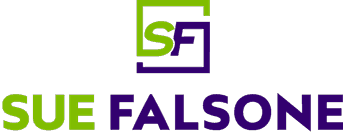
Bridging the Gap from Rehab to Performance by Sue Falsone
Review by Phil Page, PhD, PT, ATC, CSCS, FACSM
First, a disclaimer: I’ve known Sue Falsone for almost 20 years and she is a great friend and colleague, and one of the smartest and hardest working people I know. She is passionate about education, but probably more passionate about the athletes she takes care of. They always come first. She has dedicated her career to improving her own skills so she can help athletes return to their sport as quickly and safely as possible. Her ability to blend different approaches and philosophies gives her a vast toolkit to apply in a variety of situations. Now she shares her experience and guiding philosophy with anyone interested in rehabilitating athletes back to sport. So, with that out of the way, let me give you my review on her book, Bridging the Gap from Rehab to Performance (We’ll go with ‘BTG’ for short).
BTG is about first identifying deficient areas within the athletic rehabilitation process. Sports rehab is a specialized area requiring cooperation of an interdisciplinary team, including physical therapists, athletic trainers, chiropractors, and strength & conditioning coaches. Often, there are knowledge or expertise gaps that should be filed by different experts on the sports rehab team. Sue explains how the gap between the rehabilitation clinician and strength coach requires an awareness of deficiencies in knowledge and skills, which then require expansion of the rehab network to include experts with those skills. One thing I learned early on from Sue was that while she is very smart, she recognizes her limitations in the interest of the athlete, and fills those gaps with the expertise of others, thus living “Bridging the Gap” herself.
Sue’s years of experience as a head athletic trainer/physical therapist in Major League Baseball and for the USA Soccer team, in addition to over a decade with Athlete’s Performance (now EXOS, one of the premier training facilities in the world), give her unique insight to the rehabilitation process of elite athletes. Sue’s thirst for knowledge has exposed her to a variety of treatment techniques and approaches that she eloquently combines into her own philosophy throughout the book. Her eclectic approach provides a well-rounded philosophy that facilitates the entire sports rehab process from injury to elite performance.
Throughout BTG, Sue provides an overview of the variety of techniques and approaches she uses every day in practice. She provides a historical perspective on many techniques, recognizing the many other clinicians and researchers who have shaped her philosophy, and giving credit where credit is due. (I’m obviously partial to the excellent presentation of Dr. Janda’s work, which has also greatly influenced myself). She readily acknowledges that not all of the approaches and techniques have solid evidence behind them, but that doesn’t mean they can’t be effective in the appropriate situation. She acknowledges that ‘structure’ is not a dirty word and the word ‘function’ is over-used, and the pendulum has swung too far from structure to “functional training” (Amen, sister)…thus creating another gap for us to deal with!
I really like the well-rounded approach of Sue’s book. While most textbooks on rehab provide chapters on individual interventions (modalities, shoulder exercises, manual techniques), BTG lays out the foundations of Sue’s decision-making process and clearly explains the rationale in a cohesive progression. She structured BTG so the earlier chapters focus on rehab aspects, while the later chapters focus on performance aspects such as speed drills—in an attempt to bridge the gaps along each step. While she explains each approach and techniques separately, her secret is the ability to know which technique may be most appropriate at a given time, and then blend techniques together synergistically. For example, her integration of breathing, thoracic mobility, foot care, and fascial planes with speed drills effectively bridges the gaps between structure and function, providing a smooth path for athletic recovery.
Sue’s athlete-centered approach provides an organizational system (rather than a cookbook) to guide decision making from pain management to performance enhancement. Her well-rounded approach even includes an entire chapter on the biopsychosocial aspects of sports rehab, which is sometimes half the battle with athletes!
Sue’s blend of science and practice is well-written in the first person, in a way that’s easily understandable and practical. It’s almost as if she’s having a conversation with you as you read! She lays out the reasoning why she uses different philosophies in her overall approach. She ‘bares all,’ giving away many of her secrets to success along the way. I particularly like the list of website resources at the end (including the Squatty Potty website!). It was amazing to read about the wide variety of different techniques Sue has at hand—which makes her one of the best in the world.
BTG is truly a bible for anyone who wants to help athletes get back to what they love doing—written by someone who loves helping them.
Review by Phil Page, PhD, PT, ATC, CSCS, FACSM
